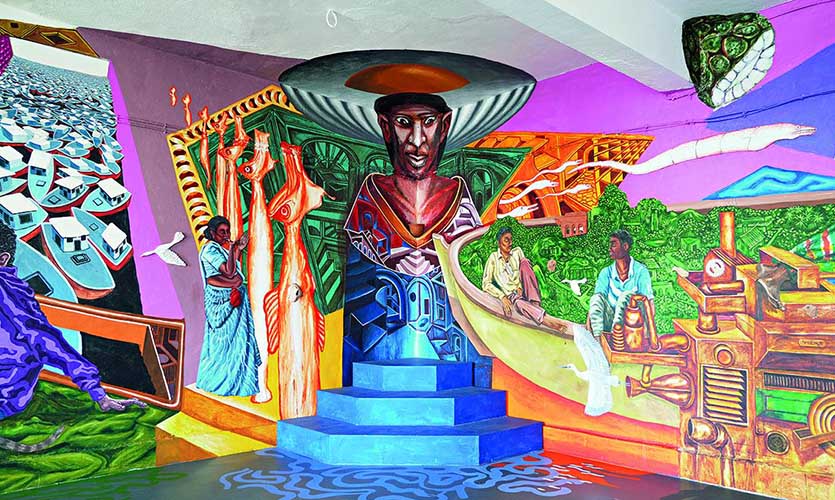The city of Mumbai is inseparable from its turquoise waters and majestic skyscrapers.
Viewing this side of the ‘City of Dreams’ from the lens of the Mumbai Urban Art Festival (MUAF) at the Sassoon Docks, Colaba, will surely make you introspect about city life and your relationship with the environment.
The three-month long art festival, co-organised by St+art India Foundation and Asian Paints, set off on December 22, 2022, at the 144-year old Sassoon Docks in Mumbai, which is intimately connected to its maritime history and will soon take over the streets of Bandra, Mahim and Colaba.
As one enters, they’re welcomed with the Asian Paints Art House with silver spikes stretching wide, walls smothered in striking murals and of course, the stench of fish in the air. But instead of undermining your experience as one would expect, it intimately connects you to the art pieces and the theme of this year: ‘Between the Sea and the City’.
Mosaic murals, immersive installations and exhibitions created by about 60 artists from all stripes of India and around the world, with a different voice and medium conveyed just one message as we experience the dangers of climate change everyday: Conservation.
Painting the town red, yellow, green and blue, Asian Paints along with the MUAF and St+art India have added vibrant colours to the docks and the lives of Koli fishermen. However, it seems to strip the illusion of Mumbai’s charm and presents stories of the hardships of the community through various pieces tucked away in dark rooms.
City Life Making Tumultuous Waves
Parag Tandel of the Koli community assembled a number of sculptures under the ‘Vitamin-Sea’ installation that explore Mumbai’s fleeting seascapes. The ebbs and flows of the sea are juxtaposed with the roaring pollution and urbanisation of the metropolis in the resin sculptures. By exploring undersea creatures, Parag delves deeply into the myths of his society. The suffering of sea life and biology as a result of chemical contaminants from the metropolis is reflected in their bodies, cast in resin with a bright yet dull and corrupted appearance.
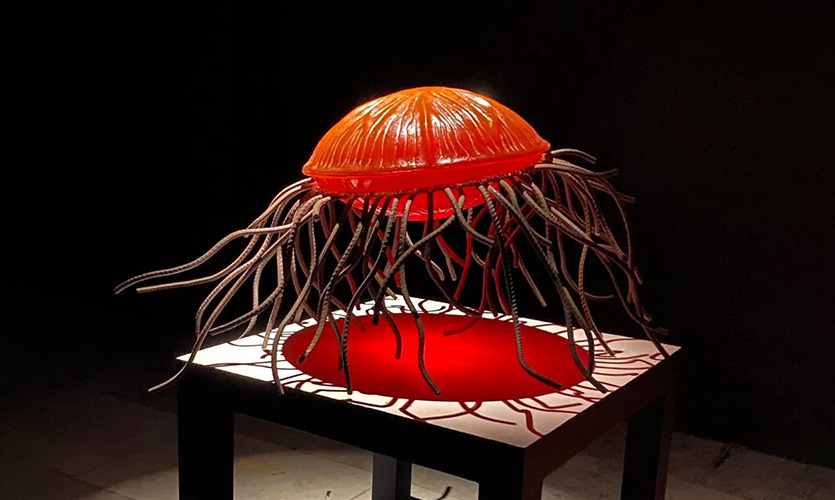
Kiran Maharjan’s ‘Land to Sea’ is a celebration of the bond between humans and marine life that was inspired by the enthralling chaos of Sassoon Docks, a kaleidoscope of sights, sounds, and odours. The piece is a reflection of fishing, which involves a dynamic interaction between the land and the sea, the fisherman and the catch, and supply and demand.
It depicts an increasingly unbalanced connection that is groaning under the crushing hue and cry of consumerism and the consumers. Maharjan creates a three-dimensional image of the docks using anamorphosis, where the image seems to tell a more intricate story when viewers start to interact with the piece through movement.
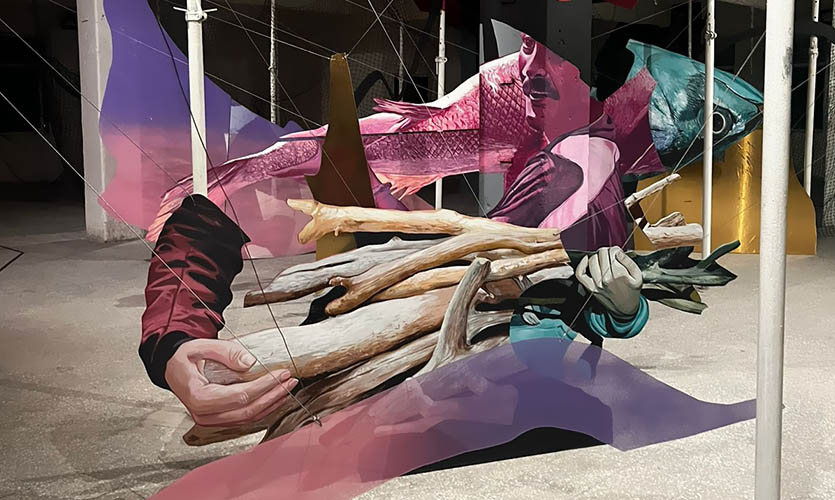
Man has been testing the wrath of nature ever since it set foot on earth. As opposed to the calm waves that you see on beaches, water can actually be quite violent if not treated with care and consideration. That is how the mixed-media installation ‘Shrine for my Oceanic Mother’ by Rithika Pandey explores the idea of a post-human, post-apocalyptic, and mythical world brought about by devastating floods. It humanises the sea in a way that forces you to empathise with the artwork and understand the deadly repercussions of the toxic relationship of man and nature.
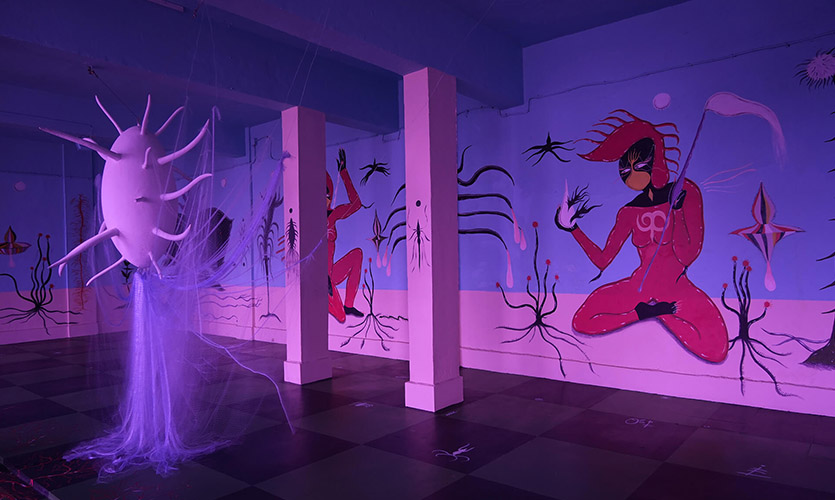
Mirage Of Urban Living
Meera Devidayal shares an anecdote through her digital piece wherein the artist saw reflections of the sea from the window of her husband’s office near Nariman Point, but the sea was nowhere. This led her to work with the image of the sea as a metaphor for nature and human emotions towards it.
The sea is portrayed as a specular contrast to the skyscrapers that serve as the medium for its reflection. The video examines the paradoxical role the urban landscape plays in simply bringing the image of the sea and its reflection while the actual sea is “nowhere”. Thus, it forces us to consider the artificiality of city life, and how far away it is from the sea, the natural world, and our own emotions.
On the other hand, Sameer Kulavoor’s ‘Metamorphosis’ installation shows a plethora of buildings, offices and roads built over fish crates. It painfully symbolises how urbanisation and evolution of metropolis has come at the cost of the Kolis. Mumbai, widely known for its sea, is also known for the lack of space on land, and how residents have to make do with compact housing in tall buildings. With lopsided political regimes, natural restraints, and development codes, this is what the future of Mumbai could look like.
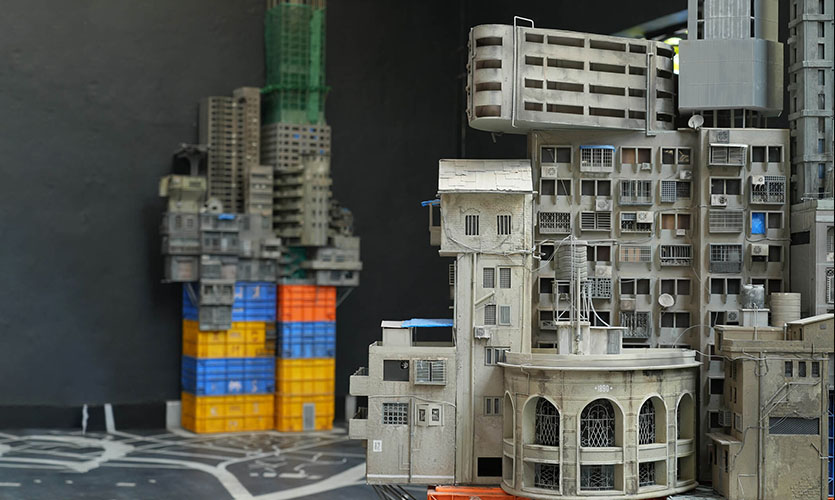
In the midst of these commentaries on ecological conservation and the fast pace of Mumbai, the artsy gender neutral washrooms by the Gaysi Family provide much needed relief. Defying binary and exclusionary standards, they have created a safe space to speak about queerness, as everyone deserves a place of rest.
Taking a walk down the Sassoon Docks doused in murals and street art, you might end up knowing a lot more about the city than you would by just living in it. You need not be an aesthete to understand what these pieces stand for as somehow they evoke the apparent emotions in you. Sadly, our engagement with the sea is limited to taking pictures at beaches. The MUAF compels you to reimagine your relationship with the environment, especially water and its dynamism.
They say art is not everyone’s piece of cake. But, if you indulge in taking a bite and enjoy the sweetness of infinite interpretations it brings, you may have a chance to be pleasantly surprised.


